Jeremy P. Bos
Machine learning method for light field refocusing
Mar 30, 2021

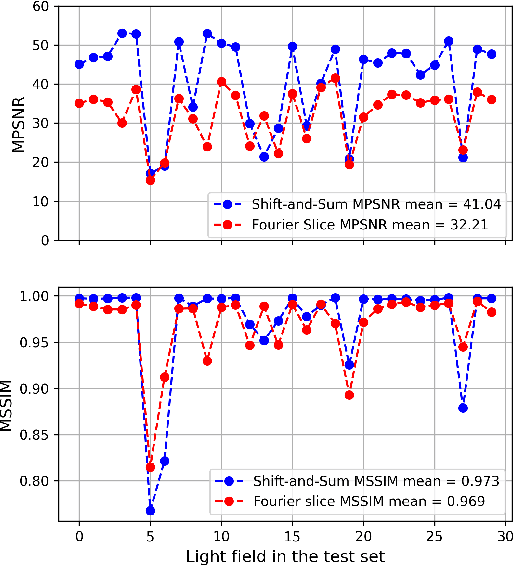
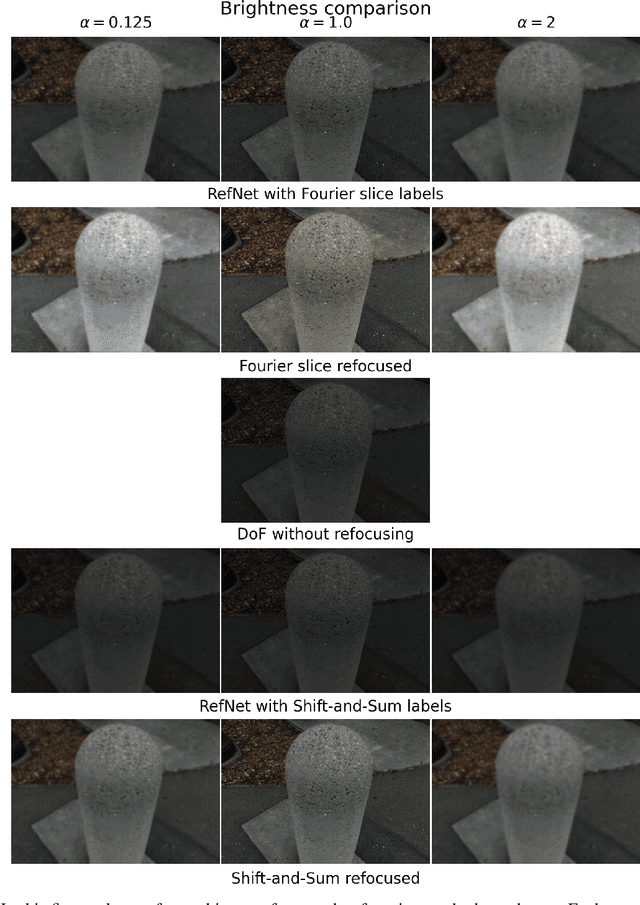
Abstract:Light field imaging introduced the capability to refocus an image after capturing. Currently there are two popular methods for refocusing, shift-and-sum and Fourier slice methods. Neither of these two methods can refocus the light field in real-time without any pre-processing. In this paper we introduce a machine learning based refocusing technique that is capable of extracting 16 refocused images with refocusing parameters of \alpha=0.125,0.250,0.375,...,2.0 in real-time. We have trained our network, which is called RefNet, in two experiments. Once using the Fourier slice method as the training -- i.e., "ground truth" -- data and another using the shift-and-sum method as the training data. We showed that in both cases, not only is the RefNet method at least 134x faster than previous approaches, but also the color prediction of RefNet is superior to both Fourier slice and shift-and-sum methods while having similar depth of field and focus distance performance.
Light Field Compression by Residual CNN Assisted JPEG
Sep 30, 2020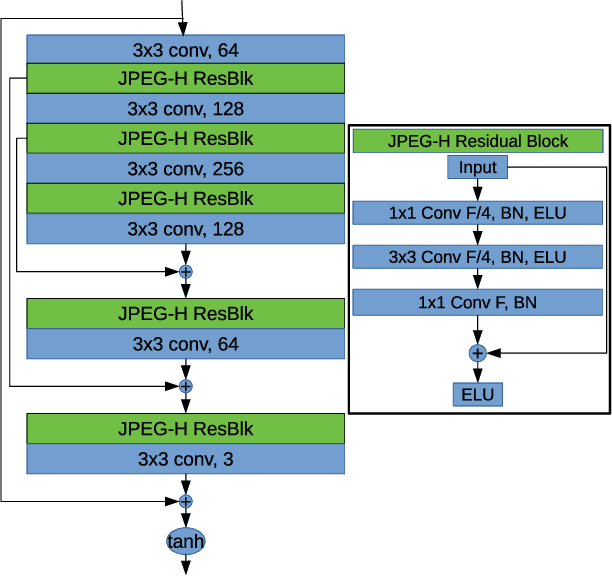

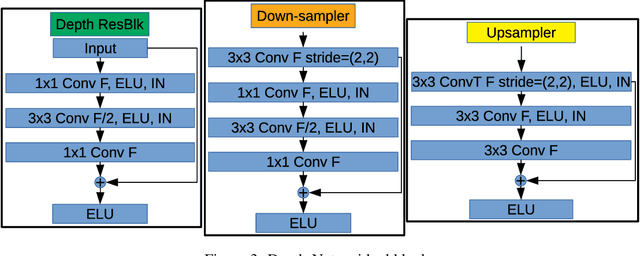
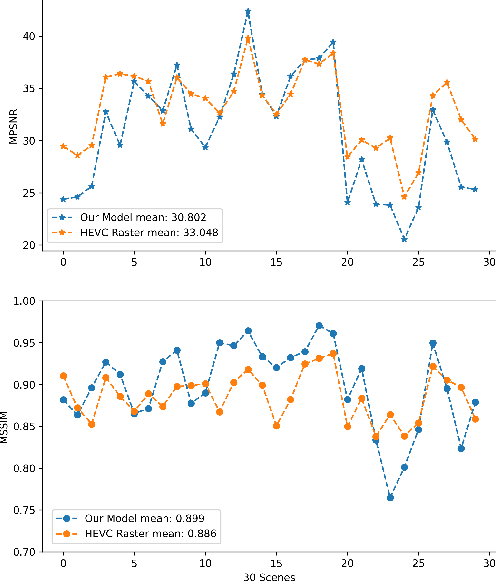
Abstract:Light field (LF) imaging has gained significant attention due to its recent success in 3-dimensional (3D) displaying and rendering as well as augmented and virtual reality usage. Nonetheless, because of the two extra dimensions, LFs are much larger than conventional images. We develop a JPEG-assisted learning-based technique to reconstruct an LF from a JPEG bitstream with a bit per pixel ratio of 0.0047 on average. For compression, we keep the LF's center view and use JPEG compression with 50\% quality. Our reconstruction pipeline consists of a small JPEG enhancement network (JPEG-Hance), a depth estimation network (Depth-Net), followed by view synthesizing by warping the enhanced center view. Our pipeline is significantly faster than using video compression on pseudo-sequences extracted from an LF, both in compression and decompression, while maintaining effective performance. We show that with a 1\% compression time cost and 18x speedup for decompression, our methods reconstructed LFs have better structural similarity index metric (SSIM) and comparable peak signal-to-noise ratio (PSNR) compared to the state-of-the-art video compression techniques used to compress LFs.
 Add to Chrome
Add to Chrome Add to Firefox
Add to Firefox Add to Edge
Add to Edge